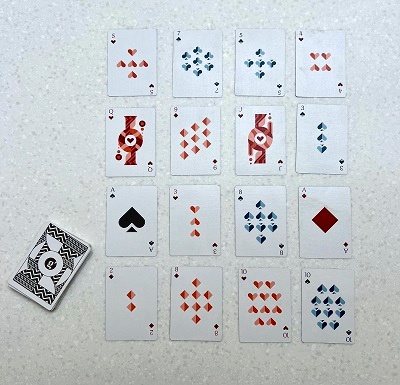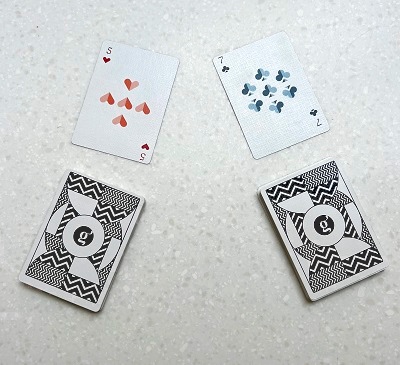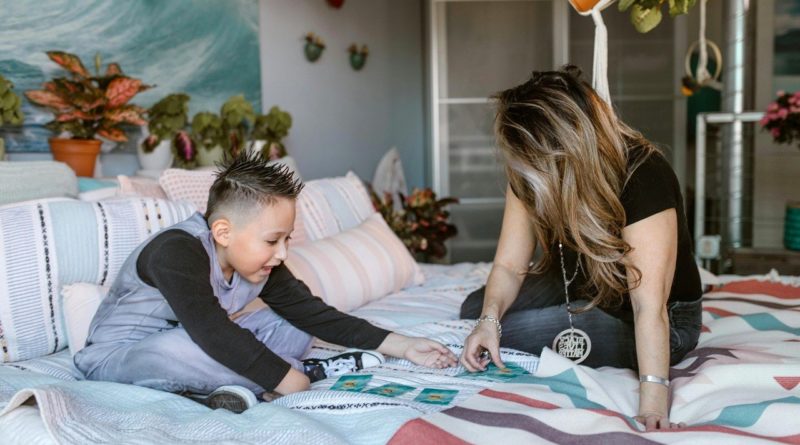How to Make Maths Fun for Kids
Would you prefer to sit in a classroom and listen to the theory of how to play football and be told to memorize all the rules of the game? Or would you prefer to play the game and learn the rules on the job?
Well, children are no different. They would prefer to play a game rather than sit and listen to a boring explanation of maths or be made to memorize facts.
Furthermore, research has proven that playing games and laughing melts away both maths anxiety, and resistance to learning information which children might find boring.
I’ve spent the last ten years finding ways to make maths more fun and enjoyable for children, and importantly to make the information stick! It’s incredible how a child’s confidence can be transformed once they finally crack maths.
Below are five maths games using a deck of playing cards that will transform your child’s love of numbers. And might even improve your own mental arithmetic skills and give you a laugh at the same time!
Game 1: Adding up to 10!
Teachers only focus on adding up to 10 for a couple of weeks at school, but often children find adding up to 10 much harder to remember in their long-term memory than adults can possibly imagine.
Often, children resort to using their fingers to count, which, unless stopped early, continues into their teenage exam years. Research has demonstrated that counting on fingers greatly reduces a child’s processing speed and slows them down in tests and exams.
If your child still uses fingers to count, head over to Fables World, which has an incredibly effective and long-lasting way of remembering addition and subtraction that will have your children rolling on the floor laughing.

- Take a pack of cards and deal out 16 cards face up in a square formation.
- Take it in turns for each player to pick up 1, 2 or 3 cards that together ADD UP TO 10 (e.g., 6+4, 2+3+5) If your cards correctly add up to ten, you keep them in your pile. If not you put the cards back on the table.
- Every time you pick up cards and put them in your pile, replace them with new cards from the pack.
- No. 10 cards can be picked up without finding another card.
- The value of the Jack, Queen, King cards is 12 and the Ace is 1
- Jack, Queen, and King cards = 12 and can only be picked up with a 2, e.g., introducing taking away e.g., 12 – 2 = 10
- The person with the most cards at the end wins.
Game 2: Addition Snap!
Ensure children are good at adding up to 10 before attempting this.

- Split the deck of cards into two. Each player takes half the pack and holds it in their hands.
- On the count of 3, both players place a card face up on the table in front of them.
- The first player to add the two cards together and call out the correct answer wins the cards.
- The adult player has to count to 5 in their head (or more if children are struggling) before they are allowed to call out the answer.
- The winner is the player with the most cards in their pile at the end.
- The value of the Jack, Queen, King cards is 12 and the Ace is 1
Game 3: Times Table Snap
If children struggle with the multiplications, first join Fables World which teaches multiplication and division in one month, yes it’s true! They use funny cartoons and games to teach so learning is effortless and fun. Then try this game at home.
- Split the deck of cards into two. Each player takes half the pack and holds it in their hands.
- On the count of 3, both players place a card in front of them face up.
- The first player to MULTIPLY the two cards together (e.g., 2×5 = 10, 8 x 9 = 56) and shout the answer out wins the two cards.
- The adult player has to count to 5 in their head (or more) before they are allowed to answer.
- The winner is the player with the most cards in their pile at the end.
- The value of the Jack, Queen, King cards is 12 and the Ace is 1
Game 4: Subtracting Snap!
Subtracting numbers can be really challenging for lots of kids. If children struggle, ask them to walk down the street for 10 paces. Then they have to walk backwards and count down their paces from 10 – 1 Research has demonstrated that counting backwards is very good for calming anxious children and can also work to reduce stress in adults!
- Split the deck of cards into two. Each player takes half the pack and holds it intheir hands.
- On the count of 3 both players turn over a card face up.
- The first person to SUBTRACT the lower card from the higher card wins the two cards and puts them in their pile. (e.g., 7-2 = 5, 9-8 = 3)
- The adult player has to count to 5 (or more) before they are allowed to answer.
- The winner is the player with the most cards in their pile at the end.
- The value of the Jack, Queen, King cards is 12 and the Ace is 1







Just had a rush of guilt for using fingers to help children add up!
What an interesting and enlightening post. Thank you!
In total agreement with you, was lucky to be a maths head from very young, but equally appreciate why folk can struggle with it, especially when it gets into the more advanced stuff, but like with so many things, if you make it fun and feel energised and exciting, turning it into games etc the mind is more receptive and willing, which enhances the ability to comprehend and retain, works in other areas of education too make learning fun and less of a chore and the results will blossom
Such great ideas. Thanks for sharing them!
fabulous ideas I hated maths I was scared od it the trick must be ti make it fun and not scary
Thank you for sharing these tips! I will take them on board to help my daughter.
It is so sad that many adults have a negative attitude to maths and when I was teaching I often found this rubbed off on their children. As a Maths co-ordinator with a lifelong love of the subject I found that by making maths fun it not only built up a child’s confidence but often changed their attitude to the subject. Running parental workshops also helped parents see that maths could be great fun and not scary at all!
I like these games but actually I find Maths is Fun!
It’s important to make maths fun,it helps them learn easier
Making maths fun is a must as it’s quite a boring lesson
Lots of good ideas!
Maths is such an important part of learning so it is nice to see these ideas as to how to make it more fun!
some great ideas. I’m going to try them with my kids
I struggled at school with maths
if it was fun I’d probably have done better
thanks